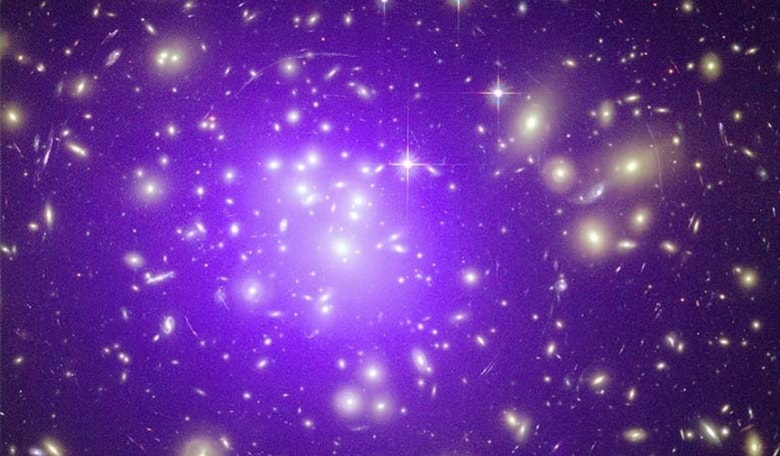It is theorised that 27% of the Universe consists of dark matter, while only 5% of the Universe is made up of ‘normal’ matter – atoms and subatomic particles, that together make up everything we can see from the smallest insect to the largest structures in the Universe. Nonetheless, this enigmatic substance thought to be the gravitational "glue" that binds galaxies together, has yet to be detected. Now, however, researchers in Denmark are proposing that our understanding of dark matter is flawed and that a new particle, known as a Planckian Interacting Dark Matter (PIDM) particle, that only interacts with gravity might hold the key to what dark matter really is.
The search for dark matter started when scientists studying extragalactic systems such as spiral galaxies and clusters of galaxies found that these objects were not behaving as expected. When Newton's Law of Gravity were applied to explain the rapid motion of the stars and gas within these systems, it failed to account for what was being observed. This led to the inference that some form of invisible matter or material dominated the dynamics of the universe. This elusive material was termed Dark Matter and scientists have been searching for it ever since.
However, no-one really knows what dark matter is. One of the main leading contenders for what makes up dark matter is Weakly Interacting Massive Particles (WIMPs). WIMPs spring from the idea of supersymmetry and are classed as non-baryonic, meaning they are not made up of subatomic particles such as protons and neutrons like normal baryonic matter. It is thought that WIMPs were created in the very early Universe, when the universe was at very high temperature, and the number density of WIMPs was roughly equal to the number density of photons (particles of light). This hypothetical WIMP is well studied and attempts to detect these particles have been conducted in underground detectors in the hope of detecting them as they pass through the Earth and through extensive (unsuccessful) searches performed at particle accelerators around the world.
Despite these prolific searches nothing has been found. Now however, researchers are proposing that maybe our assumed idea of dark matter is wrong and that new methods are needed to find it. “We have looked after dark particles in a way that will never be able to reveal them. Maybe dark matter is of a different character and needs to be looked for in a different way,” says Martin Sloth, associate professor at The Centre for Cosmology and Particle Physics Phenomenology (CP3- Origins), University of Southern Denmark, who is heading up a new line of research in the hunt for dark matter particles.
For decades, physicists have been working on the theory that dark matter is light and therefore it interacts weakly with ordinary matter. “But since no experiments have ever seen even a trace of a WIMP, it could be that we should look for a heavier dark particle that interacts only by gravity and thus would be impossible to detect directly,” says Sloth.
Accordingly, along with postdoc McCullen Sandora from CP3-Origins and postdoc Mathias Garny from CERN, the team are suggesting that a heavy particle known as a PIDM particle (Planckian Interacting Dark Matter), should be the main contender for what dark matter consists of. In their new model, the team calculated how the required number of PIDM particles could have been created in the early universe, stating that it would have been possible if the early Universe was extremely hot – the hottest it could have been.
To test their theory the team suggest several gravitational waves from the very early moments of the Universe would have been created and that these might be observable in the near future. As such Sloth and his team are planning a number of different experiments designed to detect these signals, including measuring the polarisation of the cosmic background radiation, with either ground based or satellite instruments to avoid atmospheric disturbances.
“If these experiments do not detect such signals, then our model will be falsified. Thus gravitational waves can be used to test our model,” says Sloth. Now that gravitational waves have been found, the hunt to find more has intensified.











